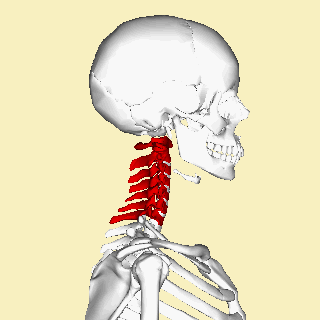Canadian C-Spine Rule
Original Editor - Josh McCormack
Top Contributors - Admin, Josh McCormack, Rachael Lowe, Kim Jackson, Elaine Lonnemann, Laura Ritchie, WikiSysop, Simisola Ajeyalemi, Claire Knott, Olajumoke Ogunleye, Selena Horner, Evan Thomas, Naomi O'Reilly and Shaimaa Eldib
Purpose
[edit | edit source]
The Canadian C-Spine Rule (CCR) is a decision making tool used to determine when radiography should be utilized in patients following trauma.
Population[edit | edit source]
The Canadian C-Spine Rule is applicable to patients who are in an alert (Glasgow Coma Scale score of 15) and stable condition following trauma .
It is not applicable in non-trauma cases, if the patient has unstable vital signs, acute paralysis, known vertebral disease or previous history of Cervical Spine surgery and age <16 years.
The Rule[edit | edit source]
File:CCR.jpg[edit | edit source]
Important Definitions [edit | edit source]
Dangerous mechanism: fall from 3 feet or 5 stairs, an axial load to the head, high speed MVA (>100km/h; 62/mph) or with rollover or ejection, a collision involving a motorized recreational vehicle, a collision involving a bicycle.
A simple rear-end collision exludes: being pushed into oncoming traffic, being hit by a bus or large truck, a rollover, being hit by a high speed vehicle.
Usefulness[edit | edit source]
Negative Likelihood Ratio associated with this highly sensitive test is less than 5%. This means there is only a 5% chance that if you get a negative finding for this test, the patient would still have the condition.
Recent Related Research (from Pubmed)[edit | edit source]
Failed to load RSS feed from http://www.ncbi.nlm.nih.gov/entrez/eutils/erss.cgi?rss_guid=1xUFNDUH9GgdD9fTQh3jmskzwhBI3kW8ioWbzoYo6vxONHeQGE|charset=UTF-8|short|max=10: Error parsing XML for RSS
References[edit | edit source]
- ↑ Stiell IG et al. The Candian C-Spine Rule versus the NEXUS Low-Risk Criteria in patients with trauma. N Engl J Med 2003;349:2510-8.







